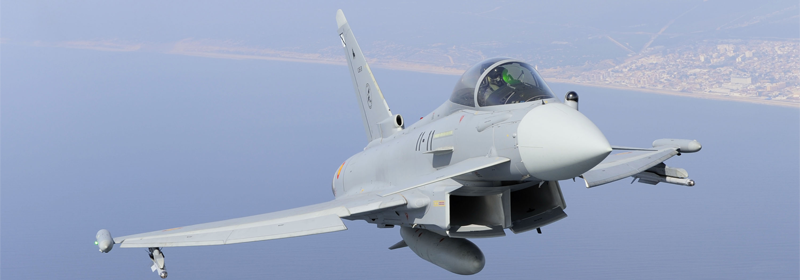- The NG MIMA project, which brings together more than 20 major companies, universities and research centers, will introduce a new era of integrated modular avionics tailored to military airborne platforms
- With a total budget of €30 million, this project is key to foster European technological sovereignty and autonomy in military integrated modular avionics, key element of future air combat systems
- The scalable reference architecture resulting of this project can be considered a first step to a future European avionics standard for the entire continent which will strengthen the interoperability of allied European armies

Indra is coordinating the NG MIMA (Next Generation Military Integrated Modular Avionics) project, one of the most important European R&D initiatives to boost a new generation of modular avionics carefully tailored to address the distinctive and demanding requirements of future military airborne platforms.
Fostered by the European Commission through the European Defence Fund, this project is made up of 21 large companies, research centers and universities from all over the continent and it has a budget estimated at €30 million.
Its goal is to completely shake up the military avionics, identifying new high-level architecture principles for most demanding operations, studying key technologies capable to support the higher data sharing and processing derived from the new operating environments. The Indra-led consortium will therefore strive to design a scalable reference architecture ready to be instantiated on different European military platforms.
This will endow manned and unmanned military platforms with unprecedented flexibility, making it easier to evolve and adapt to new demands throughout its life cycle. They will be equipped with avionic systems with open, modular and interoperable architectures that will become the long-term standard for the entire industry and armies.
NG MIMA now faces the challenge of coming up with an architecture flexible enough to integrate technologies that don’t yet exist while meeting, among others, extremely demanding cybersecurity requirements. The continent’s largest companies and best researchers will work on it for three years, applying all their knowledge of cloud, computing and cybersecurity.
All of this work is key to enhancing the ability of allied armies to interoperate and conduct multi-domain operations involving simultaneous actions in the land, sea, air, space and cyberspace domains. Developing this modular architecture will also help Europe invest more intelligently and efficiently in defence and thereby acquire greater technological and strategic sovereignty.
About NG MIMA
NG MIMA (Next Generation Military Integrated Modular Avionics) is a project financed by the European Commission through the European Defence Fund with a three-year execution period, with 21 companies from nine countries coordinated by Indra working together. More specifically, Airbus Defence and Space GMBH (Germany), Airbus Defence and Space SA (Spain), Arctur Racunalniski Inzeniring Doo (Slovenia), Barcelona Supercomputing Center Centro Nacional de Supercomputación (Spain), Clue Technologies SL (Spain), Data Machine Intelligence Solutions GMBH (Germany), DIEHL Aerospace GMBH (Germany), Elettronica SPA (Italy), ESG Elektroniksystema und Logistik GMBH (Germany), GMV Aerospace and Defence SA (Spain), Honeywell International SRO (Czech Republic), Indra (Spain), ISD Lyseis Olokriromenon Systimaton Anonymos Etaireia (Greece), Leonardo Societa Per Azioni (Italy), Office National d’Études et de Recherches Aerospatiales (France), Politécnico di Milano (Italy), Rockwell Collins Deutschland GMBH (Germany), Saab Aktiebolag (Sweden), Safran Electronics & Defece (France), Scioteq (Belgium) and Thales AVS France SAS (France) are taking part.
This publication has been co-financed by the European Union under Grant Agreement 101167828. The contents are the sole responsibility of the NG-MIMA consortium and do not necessarily reflect the views of the European Union.